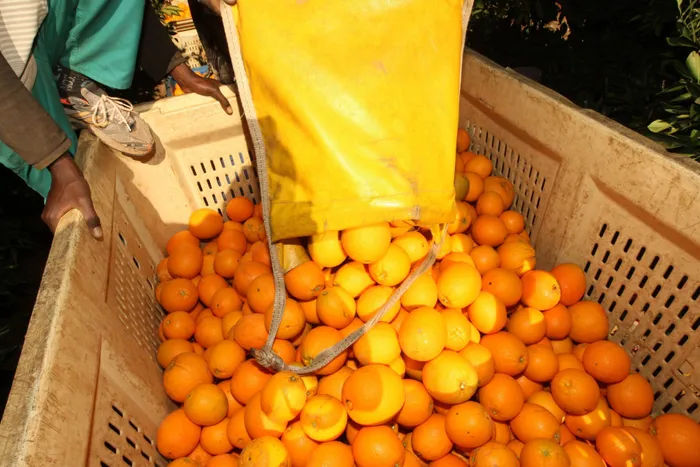SA suspends citrus exports to Spain over black spot dispute

Nompumelelo Magwaza
THE CITRUS Growers Association (CGA) has decided to suspend citrus exports to Spain until it is satisfied about testing for the citrus exports for black spot fungus to that country.
The association said yesterday that it had requested the Department of Agriculture, Forestry and Fisheries stop issuing phytosanitary certification for shipments to Spain after Spain’s dissatisfaction with the citrus imports.
The decision to suspend the citrus exports to Spain was taken by the association’s board last week. Citrus black spot is a fungal disease that can cause black marks on the leaves and skin of fruit.
“This is not an easy decision… but in the interest of securing the market and meeting the EU demand of reducing interceptions it is the right decision,” the CGA’s chief executive Justin Chadwick said.
Speaking to Business Report yesterday, Chadwick said Spain was not a big market as it only received about 4 percent of citrus products.
South Africa exported about R9.335 billion worth of citrus last year. “It is not a big volume, but we still need to make sure that our fruit is free of citrus black spot and that we comply.”
Chadwick said the main gateway for the citrus fruit was Holland. He said the reason for the suspension of its fruit to Spain was because of uncertainties about how the Spanish tested for citrus black spot.
“We have seen reports that indicate that they are not doing the methodology correctly and last year we sent an expert across to Spain, Netherlands, Italy and Germany to have a look at the methodology and testing. Although he was given free rein in other countries, the Spanish would not allow him into their facilities.”
Local citrus growers have been in dispute with the EU over the issue of citrus black spot, with the EU arguing that the disease poses a threat to its citrus-producing areas.
Local citrus growers have argued that South Africa complies with stringent sanitary measures to guard against the fungal disease, even though there is no scientific evidence that it could pose a risk to Europe’s orchards.
The local industry has 1 600 growers, who employ 120 000 people, and export about 1.5 million tons a year.
In a visit to the citrus farms in Limpopo last year, a delegation led by the EU’s ambassador to South Africa, Roeland van de Geer, and Spanish ambassador Juan Sell, as well as representatives from the Netherlands and Italy, applauded local growers on their efforts to combat the disease.
CGA
did not “expect the European volumes to be less. Over the past ten years we have been exporting an average of 600 000 tons of the citrus fruits.”
Deon Joubert, the special envoy on market access and EU matters at the CGA, said yesterday that in light of Spain’s declarations that South African citrus imports had created an unacceptable risk for them, a decision to suspend shipments to Spain was discussed and it was decided that it was in the best interest of local growers.
“As with all the markets, we will continue to talk with Spain to clear up any existing concerns or difficulties they might be experiencing. We would also like to use the opportunity to proactively agree on the methodology to correctly identify viable citrus black spot at the port of entry,” he said.
Chadwick said in terms of new markets, the biggest growth came from south-east Asian countries, with a big increase in South Korea, especially in grapefruit. Other growth came from countries such as Vietnam, Indonesia and also China.
“However, these volumes came off a fairly low-base. Those markets are not that big, but they more than doubled last year,” Chadwick said.
He added that another market that might be interesting was India, where local citrus growers would be exhibiting in a fresh produce show in Mumbai next month.
Joubert defended the industry, saying that it had gone to great lengths and enormous costs to ensure compliance, and had committed to meet the EU’s requirements.
“Ultimately the underlying issue with citrus black spot is that, despite the substantial efforts made by the local citrus industry as a whole, no agreement has been reached with the EU since 1992 on the risk of citrus black spot being transmitted by fruit to citrus orchards in the EU,” he said.